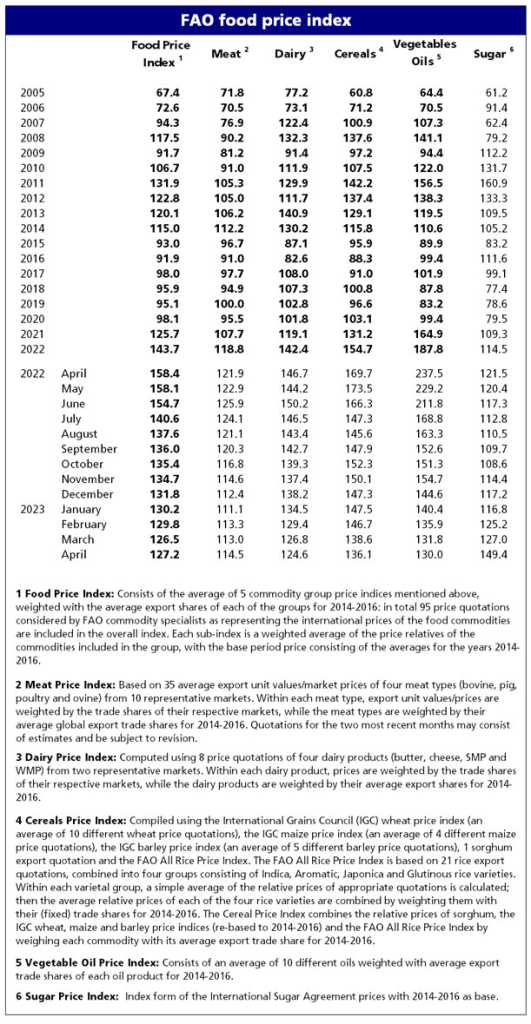The Food and Agriculture Organization (FAO) of the United Nations stated on Friday that the benchmark index of international food commodity prices climbed in April for the first time in a year, owing to increases in world quotations for sugar, pork, and rice.
The FAO Food Price Index, which analyzes monthly changes in international food commodity prices, averaged 127.2 points in April 2023, up 0.6 percent from March. The Index was 19.7 percent lower than in April 2022, but still 5.2 percent higher than in April 2021.

FAO Chief Economist’s Maximo Torero said, “It is important that we continue to track very closely the evolution of prices and the reasons for increases in prices. As economies recover from significant slowdowns, demand will increase, exerting upward pressure on food prices.
“At the same time, the increase in rice prices is extremely worrisome and it is essential that the Black Sea initiative is renewed to avoid any other spikes in wheat and maize,” he added.
Updated production and trade forecasts
In a new Cereal Supply and Demand Brief, also released on Friday, FAO adjusted its world wheat production forecast for 2023. The global outturn is now pegged at 785 million tonnes, the second largest on record, but down from last season mostly on declines in Australia and the Russian Federation from their record 2022 outputs.
For maize, Brazil’s production is expected to reach a record high, while that of Argentina is projected to drop below average levels due to prolonged dry conditions and heat waves. Conducive weather conditions have bolstered yield expectations in South Africa, which expects the second highest harvest on record.
Meanwhile, 2023/24 prospects for rice production along and south of the equator are mixed, largely due to the regionally varied impact of the La Niña event. Going forward, the possible emergence of the El Niño phenomenon during the northern hemisphere summer will need to be closely watched.
FAO raised its earlier projection for world trade in cereals in 2022/23 to 472 million tonnes, now some 2.2 percent below its record level in the previous season.
Global wheat trade is forecast to rise by 2.3 percent, while global trade in coarse grains will likely decline by 5.5 percent. International trade in rice in 2023 is predicted to contract by 4.4 percent year-to-year.
World cereal utilization in 2022/23 is forecast at 2 780 million tonnes, and world cereal stocks by the close of seasons to stand at 855 million tonnes. Based on these latest forecasts, the 2022/23 global cereal stocks-to-use ratio would stand at 29.8 percent, down slightly from 30.8 percent during the previous 12 months, but still indicating a relatively comfortable supply level globally.














